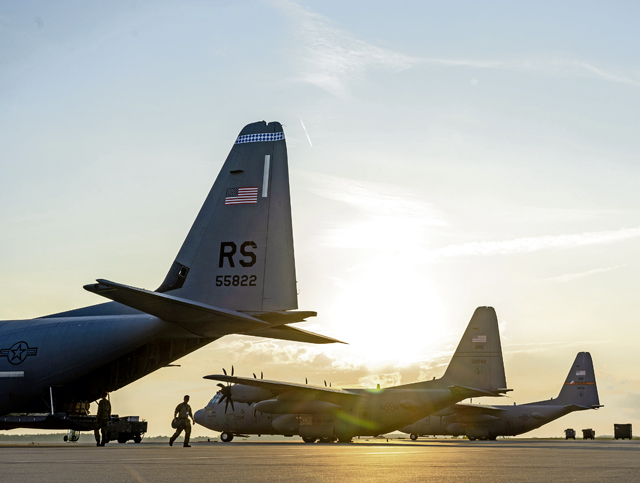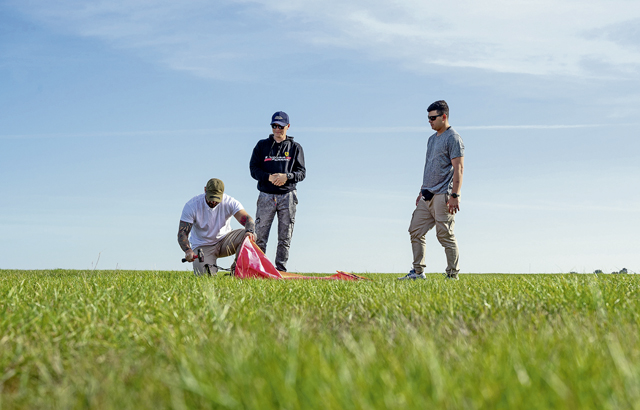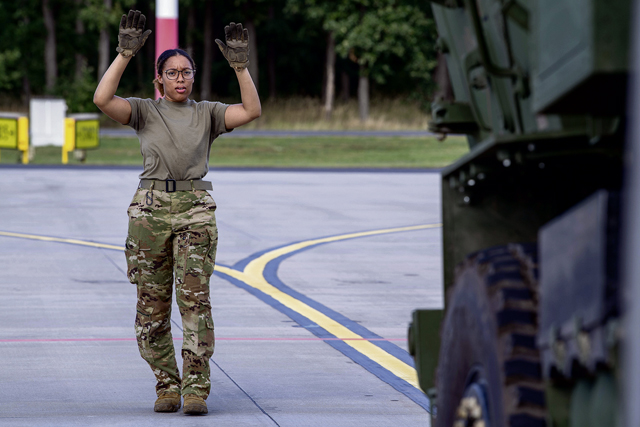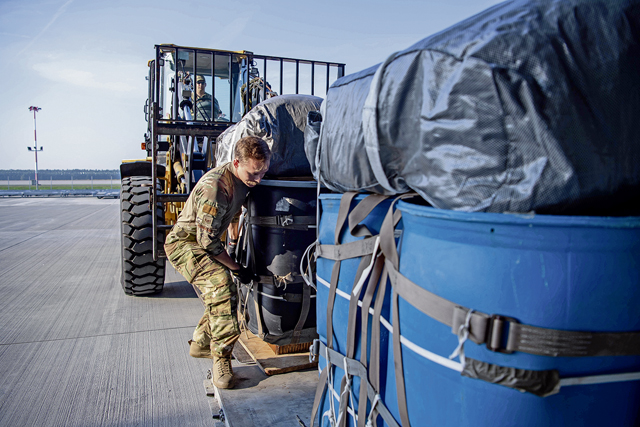
Members of the 86th Airlift Wing and 435th Air Ground Operations Wing, assigned to Ramstein Air Base, and the 182nd Airlift Wing, assigned to Peoria Air National Guard Base, Illinois, and U.S. Army Soldiers deployed to the 33rd Air Base in Powidz, Poland, to support Aviation Detachment Rotation 23-4, Sep. 11-22.
ADR is a bilateral training exercise with the Polish air force designed to enhance allied interoperability, maintain joint readiness, and assure regional allies and partners of NATO capabilities.

“Every year they host four Aviation Detachment Rotations, with one of them being mobility focused,” said U.S. Air Force Capt. Sam Sloan, ADR 23-4 mission commander. “We have been integrating with the Air National Guard, Polish air force and fighter jets while focusing on operating in a contested denied environment.”
ADR started with home station units deploying more than 200 total force Airmen and Soldiers to the 33rd AB. The deployment included three U.S. Air Force C-130J Super Hercules aircraft from Ramstein AB and two C-130H Hercules aircraft from Peoria ANGB.
The exercise scenario consisted of two fictitious nations engaged in a conflict while the U.S. Air Force supported NATO’s eastern flank.

Throughout the FTD, the total force Airmen exercised various scenarios including GPS outages on aircraft, degraded communications between ground and aerial teams, providing quick and reliable aircraft maintenance to maximize flying capabilities, and maneuvering enemy ground attacks to aircraft.
“The scenario for us is setting up and moving to NATO’s eastern flank, and continuing to provide tactical airlift, anytime, anywhere,” Sloan said. “If you take off and lose communication with your home station or GPS to know where you’re going, how do you operate at that point? That is the exercise scenario we are flying in.”
According to Sloan, navigating without GPS is a rare skill that many countries do not practice due to most aircraft being dependent on their advanced GPS technology.

The ADR 23-4 team also set up and operated multiple landing and drop zones throughout Poland. Members of the 435th AGOW and Cross Functional Airlift Support Personnel operated the zones so that they could receive cargo and Polish personnel airdrops.
“It is important to have the ability to operate landing and drop zones because they enable us to get air power, manpower and equipment into any location at any time,” said Master Sgt. James Supernault, 435th Contingency Response Squadron contingency response airborne air traffic control flight chief. “With that, we are able to establish a fully operational air base within a very small footprint and then subsequently withdraw all assets quickly to redeploy to another location.”
The exercise also included members of the 1st Combat Communications Squadron, who played a role in operations by communicating with aircrew through Link 16. Link 16 provides aircrews with tactical data link capabilities to increase their situational awareness and enhance air picture comprehension.
ADRs have been an annual FTD for Team Ramstein for more than a decade due to a Defense Cooperation Agreement with Poland. The FTD provides an opportunity for U.S. and Polish forces to integrate and practice timely and coordinated responses during peacetime and crises.
“I think the biggest hurdle with exercises like this is integrating with the host nation, and that’s also the best thing about it,” Sloan said. “Getting over things like language barriers with Polish army jumpers, or just coordinating airspace in a country that we’re unfamiliar with, can be difficult. The Polish have been great and have been a huge help in that area.”
The culminating event for ADR 23-4 was members of the 86th AW, 182nd AW and 33rd AB participating in an aviation rodeo, testing their skills for beam approaches, landing zone operations and engine running offloads. The friendly competition provided an opportunity for the total force, multinational teams to put their lessons learned from the FTD into action, with the 33rd AB bringing home the first place title.
The U.S. military operates from numerous locations across the European theater. Exercises like ADR 23-4 allow for the U.S., allies and partners to build upon existing relationships, synchronize operations and become a cohesive team should the alliance be called on to respond to peacetime or contingency events.


